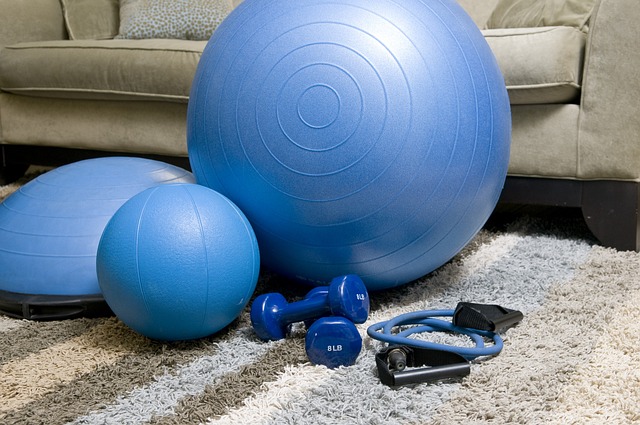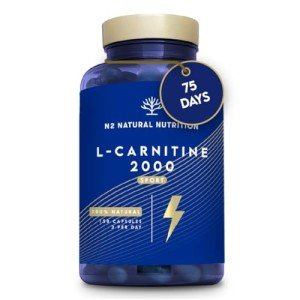Unlocking Weight Loss: The Power of Exercise
Exercise is not only crucial for shedding pounds, but it is also essential for maintaining overall health and well-being.
Whether you are looking to lose weight or simply want to lead a healthier lifestyle, incorporating regular exercise into your routine is key. When it comes to weight loss, exercise helps create a calorie deficit by burning calories. It also increases your metabolism, making it easier to maintain a healthy weight.
In addition to weight loss, exercise offers numerous health benefits.
Regular physical activity can help reduce the risk of chronic diseases such as heart disease, type 2 diabetes, and certain types of cancer. It also strengthens your bones and muscles, improves your mood, and boosts your energy levels. Exercise is even known to improve brain function, memory, and overall cognitive performance.
When starting an exercise regimen, it's important to choose activities that you enjoy and that suit your fitness level. Whether it's walking, jogging, cycling, swimming, or dancing, find an activity that keeps you engaged and motivated. Aim for at least 150 minutes of moderate-intensity exercise, such as brisk walking, or 75 minutes of vigorous-intensity exercise, like running, each week. Remember to warm up before each session and cool down afterward to prevent injuries.
The Science Behind Exercise and Weight Loss
Exercise is a key component of any weight-loss journey, and understanding the science behind it can help unlock its true power. When we exercise, our bodies undergo various physiological changes that contribute to weight loss.
One of the primary mechanisms through which exercise aids in weight loss is by increasing our metabolic rate. During physical activity, our muscles require more energy, which leads to an increase in the number of calories burned. This increase in metabolism continues even after we finish exercising, as our body works to repair and rebuild muscle tissue.
Additionally, exercise helps to build lean muscle mass.
Muscle is more metabolically active than fat, meaning it burns more calories at rest. As we gain more muscle through regular exercise, our bodies become more efficient at burning calories throughout the day, even when we are not actively working out.
Furthermore, exercise contributes to weight loss by improving insulin sensitivity.
Insulin is a hormone that regulates blood sugar levels, and when our bodies become resistant to its effects, it can lead to weight gain and an increased risk of type 2 diabetes. Regular physical activity helps to enhance insulin sensitivity, allowing our bodies to more effectively use glucose for energy and reducing the likelihood of weight gain.
How To Transform Your Body Through Exercise
Exercise is a powerful tool that can help you unlock your weight-loss goals and transform your body. Whether you are aiming to shed a few pounds or completely overhaul your physique, incorporating regular exercise into your routine is essential. Not only does exercise burn calories, but it also strengthens muscles, improves cardiovascular health, and boosts overall well-being. Let's explore how exercise can help you unleash your potential and achieve the body you desire.
Exercise is a proven method for burning calories and losing weight.
When you engage in physical activity, such as jogging, swimming, or strength training, you increase your energy expenditure. This means that you are using more calories than you would if you were sedentary. By consistently burning more calories than you consume, you create a calorie deficit, which is necessary for weight loss. Exercise also increases your metabolic rate, allowing you to continue burning calories even after your workout is complete.
Secondly, exercise helps build lean muscle mass and tone your body.
When you engage in strength training exercises like lifting weights or bodyweight exercises, you create micro-tears in your muscle fibers. As your body repairs these tears, your muscles become stronger and more defined. Beyond aesthetics, having more muscle mass actually increases your metabolism, as muscles require more energy to maintain than fat does. This means that the more you build your muscles through exercise, the more calories you burn throughout the day, even at rest.
Lastly, exercise has numerous benefits for your overall well-being.
Regular physical activity can reduce stress, boost mood, improve sleep quality, and increase energy levels. Engaging in exercise releases endorphins—sometimes referred to as "feel-good" hormones—which can enhance your sense of happiness and overall mental well-being. Furthermore, exercise has been linked to improved cognitive function and a reduced risk of chronic diseases such as heart disease, diabetes, and certain types of cancer.
These are The Exercise Regimens You Need To Build an Effective Weight Loss Plan
When it comes to weight loss, exercise plays a crucial role in achieving your goals. Creating a well-rounded exercise regimen can help you burn calories, build muscle, and improve your overall fitness. Here are some key elements to consider when building an effective weight-loss plan:
1. Cardiovascular Exercise
Cardiovascular exercise, also known as cardio, is essential for burning calories and increasing your heart rate. Engaging in activities such as jogging, cycling, swimming, or using the elliptical machine can help you burn a significant amount of calories. Aim for at least 150 minutes of moderate-intensity cardio each week or 75 minutes of vigorous-intensity exercise.
Check out the great advice here at home fitness world
2. Strength Training
Incorporating strength training into your exercise routine is crucial for weight loss. Building lean muscle mass not only increases your metabolism, but it also helps to achieve a toned and defined appearance. Focus on exercises that target major muscle groups, such as squats, lunges, push-ups, and dumbbell curls. Aim to strength train two to three times a week, allowing for proper rest and recovery between sessions.
3. Flexibility and Balance
Don't neglect the importance of flexibility and balance exercises in your weight-loss plan. Engaging in activities like yoga, Pilates, or stretching routines helps improve joint mobility and flexibility and reduces the risk of injury. Aim to include a flexibility and balance session at least once or twice a week.
4. Consistency and Progression
Consistency is key when it comes to exercise and weight loss. Set realistic goals and create a schedule that allows for regular workouts. Start with exercises that are appropriate for your current fitness level, and gradually increase the intensity and duration as your strength and stamina improve. Tracking your progress and making adjustments along the way will help you stay motivated and see results.
Remember, always consult with a healthcare professional or a certified fitness trainer before starting any new exercise regimen, especially if you have any underlying health conditions. Building an effective weight-loss plan requires dedication, patience, and a holistic approach that combines exercise with a balanced diet and lifestyle changes.
Find out more about the benefits of exercise and fitness here
If you are thinking about investing in home exercise equipment then check out the great deals here















